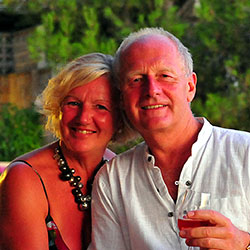In this first of a series about the main island of Honshu in Japan, we share with you our travels throughout this diverse island to bring you colour, culture, cuisine and history to entice you to explore this amazing country for yourself.
We’ll end our tour in Tokyo but before that show you highlights of travel through the Kanazawa region, Osaka, Kyoto & Nara, Hiroshima & Miyajima and the Himeji area, Hakone and Kamakura – following the route shown on the map below.

We chose to travel in April/May, outside of the hectic ‘Sakura’ Cherry blossom or ‘Aki’, autumn seasons, so that we’d have a more peaceful tour with more of the sights and sites to ourselves.
To start, we’d taken the high-speed Shinkansen ‘Bullet’ Train from Tokyo to Kanazawa – less than two and a half hours at over 160mph (260 kph), which makes large distances shrink significantly if you’re thinking of a grand tour in Japan.
A word of warning! Don’t immediately opt for purchasing the Japan Rail Pass, which traditionally has been the most economic way to travel by train throughout Japan. Recent price hikes (up to 80% increase) have made it more economical in many cases to book individual rail sectors, especially if you’ve pre-palnned your exact routes.
Our journey might seem a bit of a diversion from the normal tourist route that follows the southern coast but the historic gems that you’ll discover in the west of the island make the detour well worthwhile.
Shirakawa-go.
An overnight stop in Kanazawa finds us off by local bus the next morning, to the mountains just south of the city to find Shirakawa-go.

Shirakawa-go is a Japanese mountain settlement, once considered wild and unexplored because of the area’s natural environment, high mountains and heavy snowfall.

The distinctive style of gassho-jukuri houses – literally – ‘like praying hands’ (for its high ridge roof profiles) has created a distinctive village set within beautiful surroundings that is now registered as a World Cultural Heritage site.
 It’ll take you a couple of hours to explore the village, longer if you wish to stop for snacks or walk to a viewpoint above the town, although a shuttle bus does run every 20mins or so.
It’ll take you a couple of hours to explore the village, longer if you wish to stop for snacks or walk to a viewpoint above the town, although a shuttle bus does run every 20mins or so.
Access to some of the buildings/museum is by payment of a small entrance fee. Its worth paying a little extra to walk around the part of the village closest to the main car park as its much less populated by tourists than the main village over the river bridge.
Kanazawa.
The city of Kanazawa holds many attractions but we felt the most interesting were those that related to its feudal past. It’s best known for well-preserved Edo-era districts, art museums and regional handicrafts. Kenroku-en Garden, begun in the 17th century, showcases classic landscape design incorporating ponds and streams.
Our first stop is the residence of the prosperous Nomura Samurai of the powerful Maeda clan in the Nagamachi District. The house gives you an excellent idea of the simplicity of Japanese design, both internally and within its meticulously maintained garden that can be viewed from several of the rooms. This beautifully restored house gives a great insight into the hierarchy of rule and the trappings of wealth that prevailed for the Samurai warrior class during their heyday in the Edo period.
The Nagamachi District itself is also well worth wandering around, as a grid of no more than about four or five streets again gives a real appreciation of feudal architecture and simplicity of design.

The area’s picturesque properties with earthen surrounding walls, the meandering cobblestone covered lanes and its small canals are a charming departure from modern city life.
Our next stop in Kanazawa is Kenroku-en, known as a ‘strolling style’ garden, again constructed during the Edo period by the Maeda clan. Its considered to be one of the Three Great Gardens of Japan.
Its too easy just to walk through the gardens with blinkered eyes, so its important to stop periodically and view the cameos of garden design from different vantage points to truly appreciate their beauty.
Kenroku-en means ‘having six factors’ – the attributes which bring out the garden’s stunning beauty – spaciousness, tranquility, artifice, antiquity, water sources and magnificent views. Depending on your leanings towards gardens and their design, even the mildly interested can easily spend an hour or two wandering around the narrow pathways. Its truly a garden for all seasons, with plum and cherry blossoms in spring, azaleas and irises early in summer, and colourful red and yellow leaf transformations in autumn.
Sticking with tradition, its a natural progression for us to visit the ‘Geisha District’ of Higashi Chaya, with its restored teahouses and taverns where elegantly dressed helpers in silk kimonos prepare traditional tempura dishes and perform folk songs. Its an education just to walk the streets of the district – where many young visitors walk the streets in kimonos (many renting the garments for the day, simply to take selfies in traditional settings) – but if you’re tempted by the souvenir shops you’ll find that many specialise in Kanazawa’s signature gold-leaf lacquerware.
Kaga Onsen
As we leave Kanazawa, we take the opportunity to visit Kaga Onsen, a natural spa and hot spring resort about an hour away. Its also the location of a modern-build but traditional style ‘Ryokan’ hotel. Original Ryokan were small wooden built inns with beautifully designed paper screens between rooms, tatami mats on the floors and communal baths. Today’s interpretation mirrors all of the aesthetic qualities of the originals but makes allowances for modern needs by housing the rooms within contemporary buildings.
A note of interest. Traditionally room and property sizes were measured by the number of tatami mats that would cover the floor area. Today this has evolved into measuring hotel rooms by the square metre. Japanese rooms err towards the small size, so as standard of service is consistently good in Japanese hotels, be more inclined to book your hotel by the size of room you’d like.
At our Ryokan, we don our nemaki robes and head for the baths, which are segregated but do require you to shower and bathe naked with other hotel guests – a great leveller – before retiring to our room in preparation for a superb Japanese meal of sushi and sashimi.

What a brilliant start to our Japan tour, we’re definitely aclimatising to the culture!
Look out for the next in our series of reviews of this amazing country.

If you’d like to check out Japan for yourself why not ask us to arrange your own tailor-made travel – to immerse yourself in the wonders of this world?

 Let us plan your own inspiring journey to exotic climes
Let us plan your own inspiring journey to exotic climes
Why not download the TLC World guide brochure or give us a call today on 01202 030443, or simply click ‘enquire’ to submit your own personal itinerary request



















